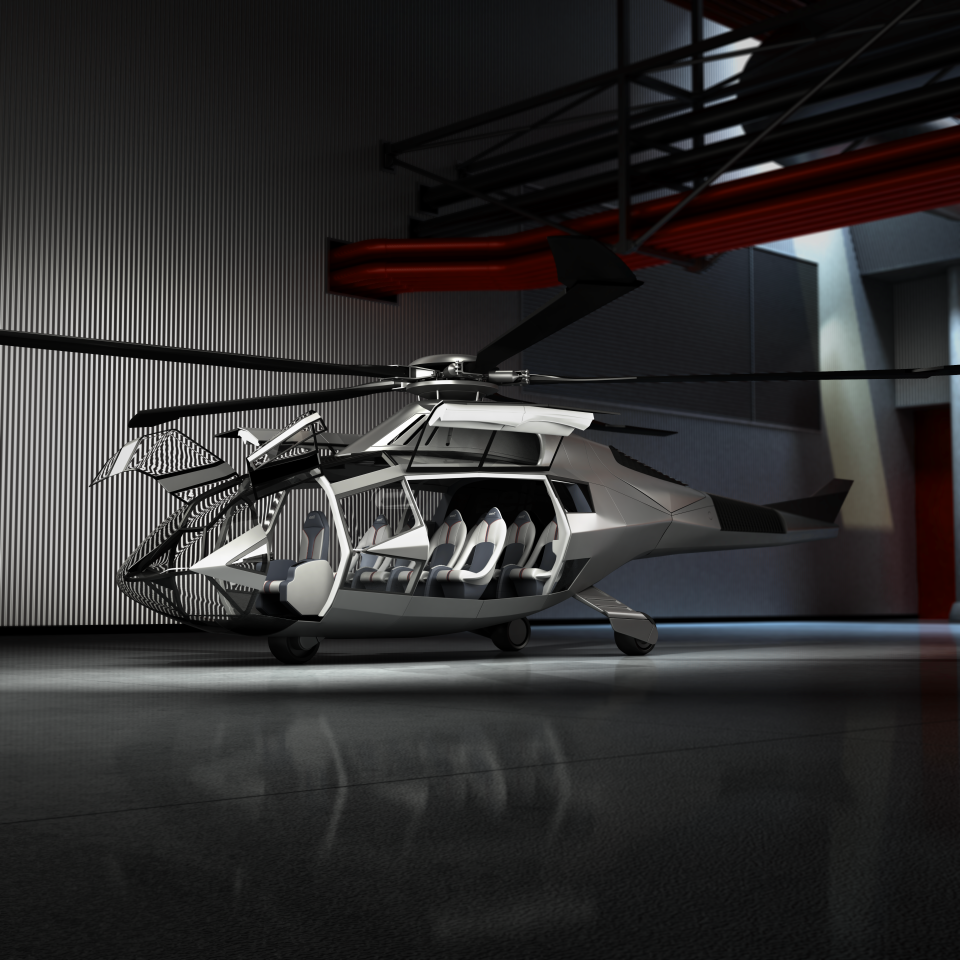Bell Helicopter isn't known for indulging in concept aircraft, but it's dipped its toes in the concept waters for the first time with the FCX-001. Unveiled at Heli-Expo 2017 in Dallas, Texas, the rotorcraft concept features an airframe crafted from sustainable materials, a hybrid power system, an artificial intelligence co-pilot, and morphing rotor blades that change to suit different flight conditions.
"Six months ago we created a dedicated team to focus on emerging technologies and how we could incorporate them into our products." Bell Helicopter's President and CEO Mitch Snyder aid as Heli-Expo. "Among that team's first tasks was to display visually the technologies and innovations that present a roadmap that we envision bringing to market."
The result is a concept that features a number of innovations both inside and out. At the rear, the tail boom has an embedded anti-torque system to improve safety, reduce noise, and increase performance. The copter's hybrid propulsion system sees advanced thermal engine cores handling main propulsion and feeding into the electric motors that power the anti-torque system for better control and simplifying maintenance.

Providing the lifting power are morphing rotor blades that can change shape for better performance under different flight conditions. Meanwhile, the airframe is designed to improve visibility and situational awareness, and is not only customizable, but is also made of advanced sustainable materials. In addition, Bell says that the airframe is central to the aircraft's energy management system, which harvests, stores, attenuates, and distributes external energy or system energy to the flight systems.

Inside, there's a single pilot seat with augmented reality technology and an artificial intelligence computer system instead of a co-pilot or engineer. This allows the traditional Multi Function Display to be replaced and enables the aircraft to be optionally piloted, with the pilot acting more as an overseer. Bell says this is a logical stepping stone on the path to fully autonomous unpiloted VTOL aircraft.
In the passenger cabin, a modular flooring system makes it easy to customize the seat layout or removes seats to make more room for cargo. The brightness and color of the overhead LED lighting can also be customized, while augmented reality is again put to use, this time for infotainment or to allow the passengers to carry on video conferences or share documents.
"Being a pioneer in the aircraft industry is in our DNA and we want to share this renewed passion with the world," says Snyder. "The FCX-001 points the way for our future – a renewed focus on innovative solutions and technologies. When the time is right we look forward to sharing more of what we're doing behind closed doors."
Source: Bell Helicopter












